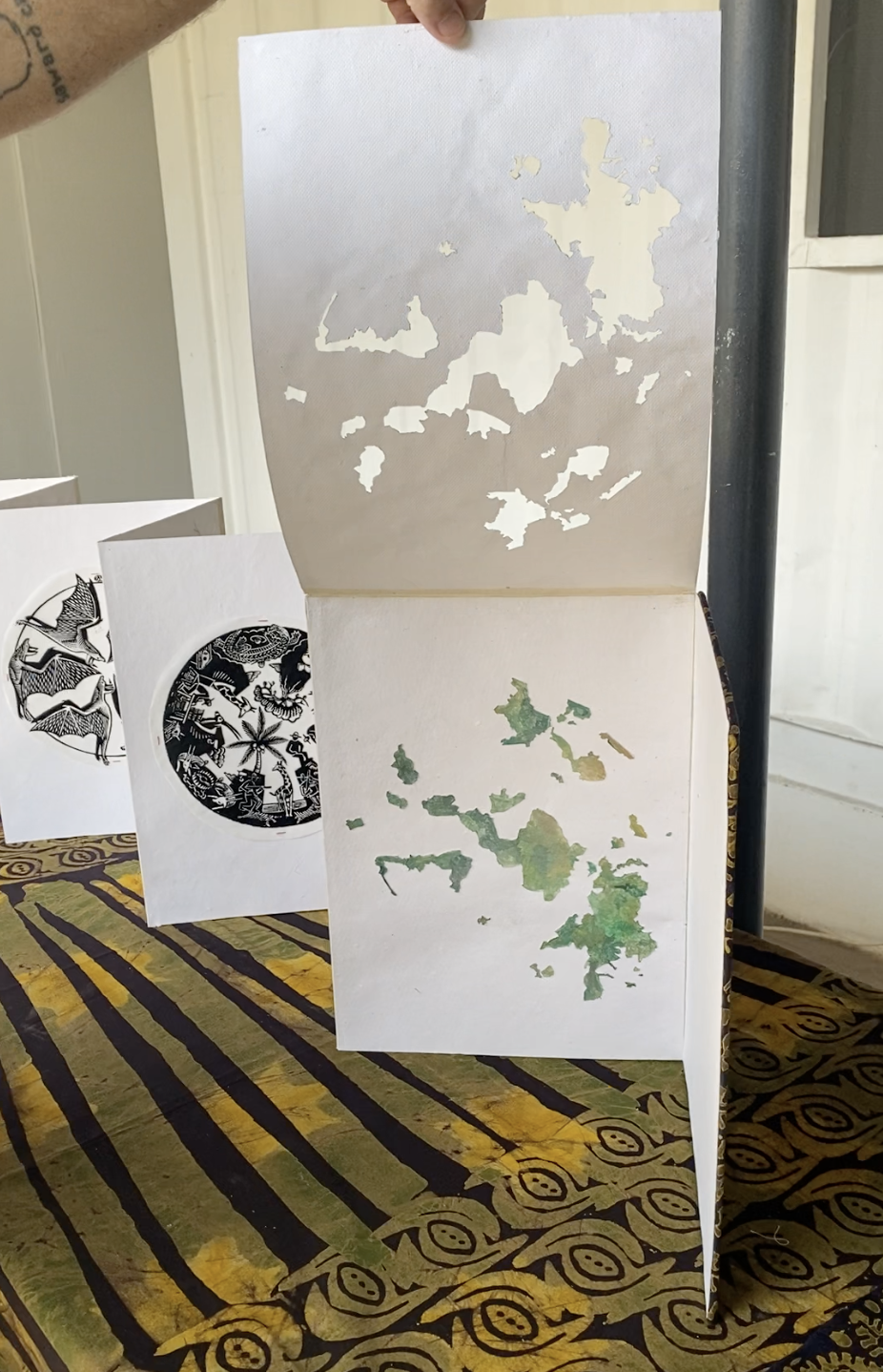Potentialities
Installation: Artist book, video/audio projection and viewing room, printed muslin, Nafasi Art Space, Dar es Salaam, TZ
An exhibition by Erica Thomas & Roger Peet
This project was an assemblage of work created during a seven-week residency at Nafasi Art Space in the Mikocheni B neighborhood of Dar es Salaam. The exhibition incorporates handmade maps, linocut prints on canvas and paper, a one-of-a-kind artist book, and video and sound recordings from our research around the city of Dar es Salaam and beyond. The work we created for this exhibit is shaped by our interest in how people living in Tanzania understand and are responding to changes brought on by climate change, habitat loss, and the continuing ramifications of post- and neo-colonial struggles over resources and sovereignty.
During the residency we posed questions to the Nafasi community in the gallery space and invited visitors to respond to them. The series of six questions addresses issues of climate change, biodiversity and land use, and we collated the handwritten responses that we received into a video presentation which will loop during the exhibit. The installation also includes audio soundscapes from the city, the ocean, and the Serengeti plain.
The artist book includes visual representation of research conducted through engagement with the Nafasi community, as well as visits to neighborhoods and areas outside the center of Dar, and conversations with guides and tourism workers in some of Tanzania’s parks.
We gathered the results of many conversations about climate change, biodiversity, land use and daily life in Tanzania, and combined them with observations from our explorations of the city and the country. This information was incorporated into a series of linoleum block-prints on canvas and paper, and a group of hand-stitched book-pages which record the handwriting and the ideas of respondents. Patterned fabrics printed with the linoleum blocks bring the ideas of the show further into a material context, implying the ways that these ideas clothe our lives and understandings of the world.














